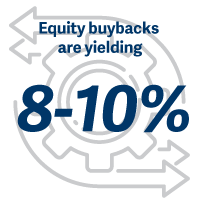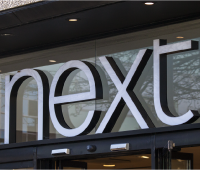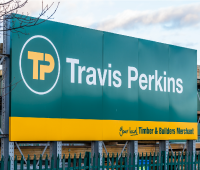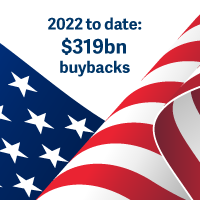07 Jun 2022
So far this year, FTSE companies have spent over £30bn buying back their shares – and we anticipate that there is plenty more to come. This is a step change from the past.
For context, in the decade between 2007 and 2017, buybacks each year totalled between £15bn and £20bn. Something once seen as more of a US phenomenon is now becoming a characteristic of the UK stock market.
More than half of our own portfolio (by value) consists of companies that have bought back shares in the past year, so you would be forgiven for assuming we were unquestioning fans of this model of rewarding shareholders.
No mistaking, we think it is a good thing, but the reality is more complex.
Share buybacks may both signal and create value for long-term owners of businesses – but it is not a given that they will. We think pattern recognition, common sense and attractive valuations help to understand where and whether to be supportive or not.
Our north star has always been, and remains, sustainable (and preferably increasing) free cashflow, with dividend growth being the output.
It may surprise some that though we manage an equity income strategy, return of capital to shareholders, in whatever form, is pretty much the last thing we discuss with companies.

We are far more concerned that investment in the business itself is sufficient to at least maintain its cashflows and to widen its competitive moat, because this is what drives sustainable, long-term dividends.
Only when we are satisfied that the investment to nurture has been made and cashflow is sustainable can we turn to discuss the options for capital allocation.
The future prospects of a business and its owners are largely determined by management’s ability to consistently choose the optimal option when it comes to capital allocation.

Our experience – and we are not speaking entirely with fond memories here – is that this is most likely when skilful and rational management are able to identify and compare prospective returns on capital available from the various options for deploying it.
Long time horizons help frame these discussions – and given that currently our average holding period is six years, we would see ourselves as having something to contribute to such discussions.
In recent years there has been a shift in the way companies invest and how this appears in financial statements.

One cost appears on the balance sheet, the others in the profit and loss account. Companies that have been investing heavily through the profit and loss accounts to protect and enhance their competitive positions over multi-year periods are now seeing benefits in their prospects for cashflow generation and durability.
In many cases, this goes above and beyond what is needed to sustain and grow the business further. When tallied with strong balance sheets as the world emerges from the Covid pandemic, it means these companies can start to consider increasing the amount of capital they remit to shareholders, hence the increasing incidence and quantum of share buybacks.
Since Brexit, the UK market has underperformed very noticeably.
But let’s just pause and reflect on the simple signal that companies have the firepower and justifiable economics to buy back their shares in what is the cheapest (and most global) of major stockmarkets.
It is not uncommon to see the buy-back of equity yielding 8%, and often in excess of 10%, which is a gulf and a half away from current financing rates, even if they were to rise from here.

We see reasonable projections of companies returning 20, 30, 40% of their capital in the next 3-5 years, which means selling shareholders are leaving more cashflow per head for remaining long-term shareholders like us; just by staying put we are seeing the value of our stakes in these companies rise.

Next, which we hold, is one such business.
Perception: the perception is that it is a structurally-challenged high street retailer has more to do with history than the current facts or future prospects.
Reality: It is a multi-channel, multi-brand and increasingly multi-national company.
The strategy: Management’s primary focus on capital allocation is to reinvest in the business at attractive rates of return, be it technology platforms or acquiring ownership stakes in brands such as Victoria’s Secret and Reiss.
As their financial disclosure shows, they are highly disciplined when assessing how to deploy the surplus capital that is left after this investment – starting with a baseline dividend and only then buying back shares when the equivalent rate of return on offer is at least 8%.
Immediate consumer pressures notwithstanding, Next has its best fundamental long-term prospects in many years – and thanks to judicious buybacks over the past decade-and-a-half, the share count has reduced from 227m shares in 2007 to just over 131m at time of writing.
The benefit? The benefit for us as shareholders is that as the share count falls, so our ownership stake increases, which means we see an improvement in dividends per share. With a current ERR of 11% the company is buying shares in the market – so that 131m is decreasing every day.
Share buybacks may additionally be a sign of improved capital discipline within an organisation.
There are multiple recent examples in the UK market of management teams that have made the rational-but-bold decision to slim-down the size of their business by disposing of non-core activities, generally at valuations that exceed the group valuation multiple.
The result is a better-focused, better-quality portfolio and a strong balance sheet.
The challenge: Building supplies distributor Travis Perkins had a surfeit of low-return assets. These were disposed of.
The result: The company has increased its exposure to decarbonisation and to its multi-channel, capital-light Toolstation offering, which has the potential to grow at attractive rates of return for many years to come. The company is currently buying-back shares at an ERR of 12%.

Management alignment with long-term owners is a non-negotiable for a successful share buy-back, as is a clear framework for assessing value
In our experience, finding a CEO who thinks their shares are overvalued is about as common as meeting a barber who tells you that you don’t need a haircut.
We see examples where the business is buying-back stock at a rate of return that is 4% or below. Perhaps we are overly cynical, but the motivation seems more likely to be the short-term stock price rather than long-term value creation.

Although we are UK equity managers, our horizons for learning are global and we monitor business practices on the other side of the Atlantic with interest.
As we seem to be heading towards a US model, it is worth looking at it in a little detail.
In the US, where a record $319bn of share buybacks have been authorised already this year, many companies use stock-based compensation as a means to recruit and retain talent.
Some companies will issue as many shares as they buy back, neutralising the benefits. The spare cash has gone somewhere – to staff, not to shareholders.
Had the remuneration gone through the profit and loss accounts in the traditional way, would the company have looked as profitable? Would its valuation be lower? We are huge fans of American ingenuity, but we hope this is one development that does not cross the pond.
The bottom line for us is the imperative of capital discipline, along with a clearly articulated management framework to create long-term shareholder value.
The attractive valuations and strong balance sheets of UK assets are a good starting place for value creation. While there is plenty of noise around the subject, it seems to us a clear signal of value relative to history and other asset classes.
We have welcomed most share buybacks within our portfolio, but we will continue to take each case on its merits.
Yields will fluctuate so income from investments is variable and not guaranteed.
To find out more about Artemis visit www.artemisfunds.com.
FOR PROFESSIONAL AND/OR QUALIFIED INVESTORS ONLY. NOT FOR USE WITH OR BY PRIVATE INVESTORS. This is a marketing communication. Refer to the fund prospectus and KIID/KID before making any final investment decisions. CAPITAL AT RISK. All financial investments involve taking risk which means investors may not get back the amount initially invested.
Investment in a fund concerns the acquisition of units/shares in the fund and not in the underlying assets of the fund.
Reference to specific shares or companies should not be taken as advice or a recommendation to invest in them.
For information on sustainability-related aspects of a fund, visit www.artemisfunds.com.
The fund is an authorised unit trust scheme. For further information, visit www.artemisfunds.com/unittrusts.
Third parties (including FTSE and Morningstar) whose data may be included in this document do not accept any liability for errors or omissions. For information, visit www.artemisfunds.com/third-party-data.
Any research and analysis in this communication has been obtained by Artemis for its own use. Although this communication is based on sources of information that Artemis believes to be reliable, no guarantee is given as to its accuracy or completeness.
Any forward-looking statements are based on Artemis’ current expectations and projections and are subject to change without notice.
Issued by Artemis Fund Managers Ltd which is authorised and regulated by the Financial Conduct Authority.